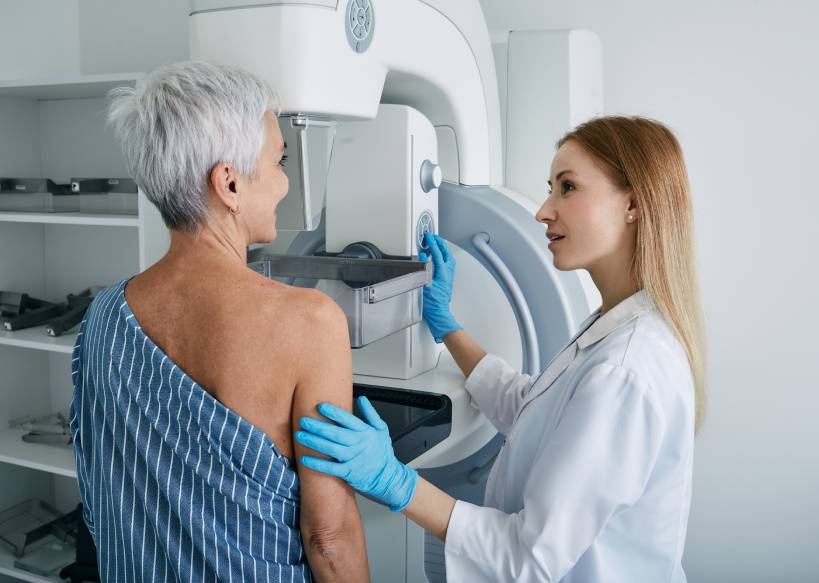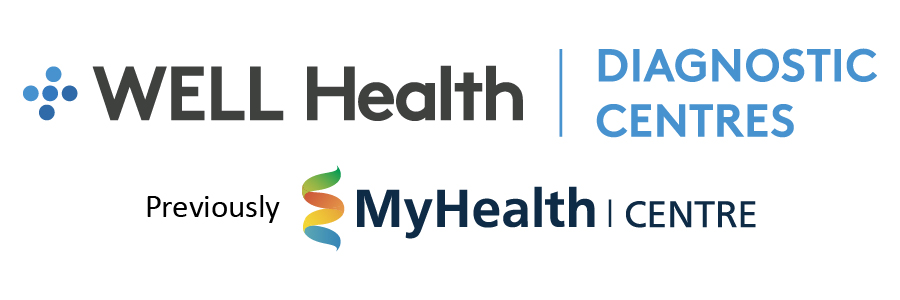NEWS & INSIGHTS
Mammography Screening: Enhancing Breast Cancer Detection

Mammography screening, also known as a mammogram, is an X-ray of the breast. It flattens the breast between two imaging plates and uses low-dose X-rays to see the breast tissue. Although this might sound scary, mammography screening is the best way to detect early-stage breast cancers. Early-stage cancers are more positive because they are easier to treat. In the early stages, the mass is not big enough to cause symptoms or spread to other parts of the body. The Ontario Breast Screening Program (OBSP) is a screening program that encourages women in Ontario to get screened for breast cancer, and has locations all over Canada.
Mammography Screening: The Gold Standard in Breast Cancer Detection
Mammography screening detects and visualizes a lesion in the breast tissue. The procedure allows the detection of breast cancers, benign tumours, and cysts before they can be felt (such as during a self–examination), making it the gold standard in breast cancer detection.
OBSP’s multiple locations ensure that mammography screening is accessible to many women from all over Canada. According to the CDC, the average mammography starting test age for women who are low-risk is 50 years old. High-risk patients with a history of cancer in their family are advised to start going for mammograms at the age of 40. Most cases are found in people ages 50 and over. As unappealing as the procedure is, annual clinical breast exams at a breast health clinic detect lumps in their early stages. It is a procedure that should be done every year to double-check and verify lumps found during self-examinations, or as a routine precaution. In Ontario, breast cancer has one of the highest survival rates of all cancer types because of the high early detection rate.
Beyond Mammograms: Exploring Other Screening Tools
Mammography screening is not able to prove whether a suspicious mass is cancerous or not, but it will raise the question of possible breast cancer and indicate the use of other screening tools. These tools are used to confirm diagnosis and size. A diagnostic mammogram is a more detailed X-ray of the breast and is used to diagnose an unusual breast mass. If a suspicious mass is detected during either of these procedures, the tissue will be sampled for a biopsy using a needle and guided by ultrasound imaging. The tissue is removed and tested to determine if it is malignant. High-risk patients can have cysts or benign lesions shown on their mammograms for many years before one shows up as malignant, which is why yearly screenings are so important. Any changes, like the development of a lump, swelling, skin irritation/dimpling, or nipple discharge, warrant a trip to the doctor.
Another screening tool used for the detection of breast cancer, which is less painful in comparison to a mammography screening, is a breast MRI (magnetic resonance imaging). A breast MRI uses contrast that is injected into the patient before the procedure. The contrast helps to highlight abnormalities and makes the tissue easier to see. MRI, used with mammography and breast ultrasound, can be a very helpful diagnostic tool.
Advancements in Diagnostic Technologies
According to radiologyinfo.org, diagnostic technology is becoming more and more advanced each day, providing better image quality and assisting in mammography screening. Suspicious masses can be imaged and confirmed using other modalities, such as diagnostic mammography with contrast or MRI. Breast MRI’s are less invasive, and there is no breast pain after the procedure, unlike the breast pain experienced after a mammography screening.
Precision and Accuracy in Breast Cancer Detection
If a screening mammogram finds something concerning, a more detailed diagnostic mammogram will be done. It’s often used to look closely at both breasts to compare for any irregularities. Precision and accuracy in breast cancer detection is extremely important, as many women will have a history of cysts or benign lesions that are flagged. These flagged masses will need to be monitored and biopsied often to ensure that they do not grow into malignant breast cancers.
Comprehensive Mammography Screening Approaches
Women who are considered at high risk of breast cancer (family history, genetic gene, past breast cancer) should speak with their doctors about the benefits of starting mammography screening earlier, as well as having additional tests (diagnostic mammography, breast ultrasound, MRI). By taking the first step and booking your mammography screening at any of the OBSP locations, you can ensure that you are experiencing the gold standard of breast cancer detection in Canada and increase your chances of breast cancer survival.
Sources: www.cdc.gov, www.radiologyinfo.org, www.hopkinsmedicine.org
